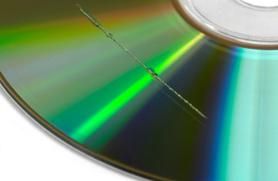Restore veterans prefer the good old standby of automotive grade rubbing compound, such as from 3M [source: 3M]. Admittedly, 3M polish is not necessarily a green product, it is after all synthetic in its basic composition, but you will need only a dab and quite frankly, there is no natural product that will even come close to the power of this stuff when it comes to resurfacing deep or multiple scratches.
The experts tell you to always polish in a straight line from the radius of the center to the outside, rather than polish in a circular motion. While this is good advice for the most part, since small circular scratches have been known to throw off the laser tracking system of a player, most tracking systems today are far superior to the ones you remember from the 90's. So, if you are willing to let the rubbing compound breakdown to its final stages, circle polishing can work well too.
When we refer to letting the rubbing compound breakdown, we're saying the rubbing compound formula essentially contains a grit that is designed to scratch the surface you are polishing, and wear down the deeper scratches until they are closer to the same height as the rest of the CD. It does this by starting out with a heavy grit, which breaks down over the polishing course into finer and finer grit, until it eventually leaves a mirror polished surface. But this is only if you put enough elbow grease into it.
Many find that circular polishing works just as well as radius polishing, but you can follow whatever advice you like, as this is simply a matter of opinion and personal experience. But what if you need to fix a CD right away and don't want to travel out to your nearest store to grab a bottle of polish, in such a case, toothpaste works reasonably well too.
